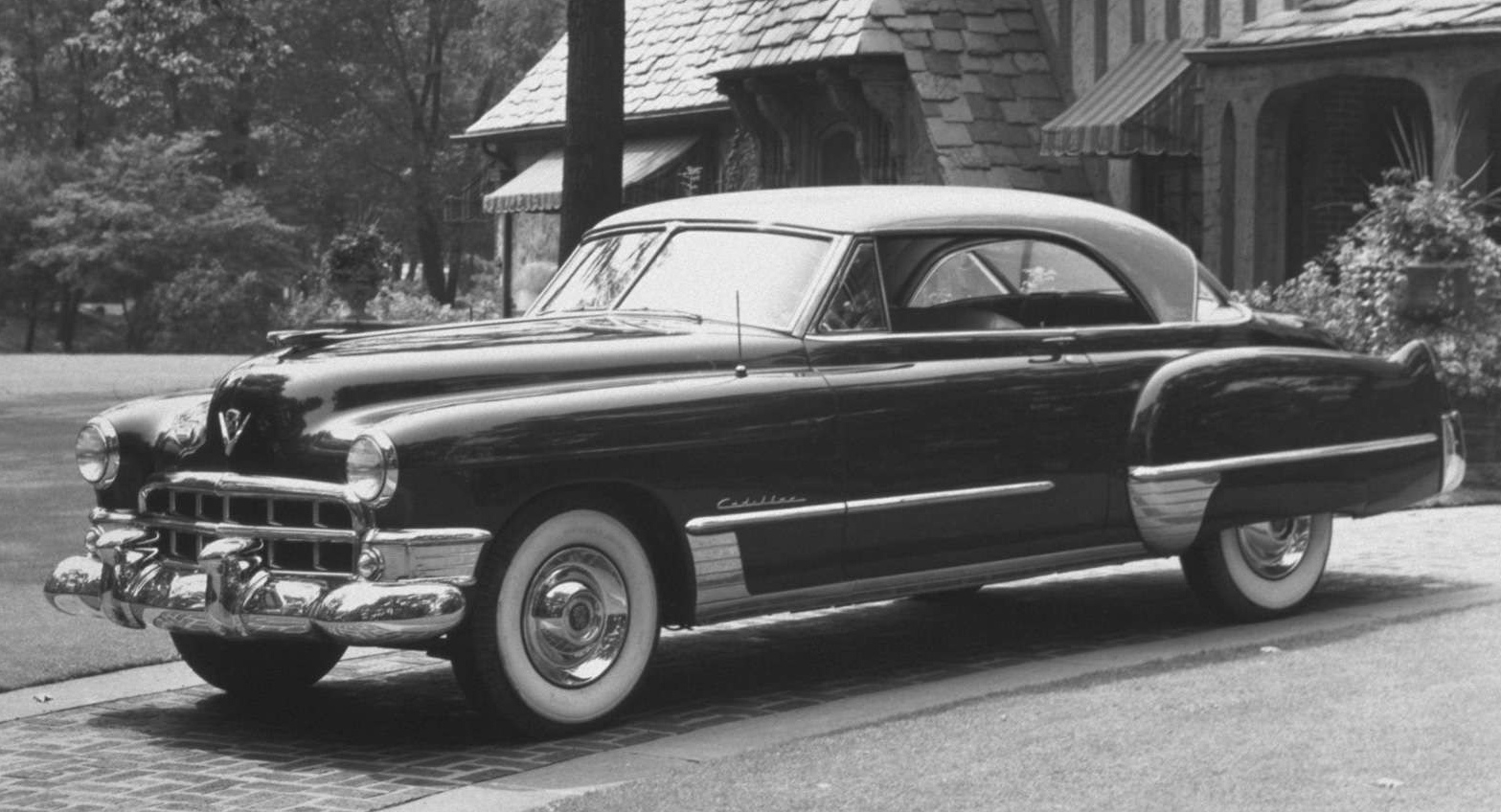Cars with that configuration appeared long before General Motors' 1949 model year introduction of the style. But it was GM's market dominance that made hardtop convertibles common. The term was coined because convertible coupes lacked center posts, and the new design basically was a coupe lacking center posts, thereby evoking the look of convertibles with their cloth tops raised. "Four-door hardtops" appeared on some GM brands in 1955, and by the following year they were available for all GM and Chrysler marques.
One reason for the sudden popularity of hardtop convertible coupes was that those initial GM designs were very attractive, as we shall see below. They first appeared on 1949 Oldsmobiles, Buicks and Cadillacs, but those lines were restyled for 1950 and the original top design was abandoned. Chevrolet and Pontiac got the redesigned GM A-body in 1949, but didn't have hardtop convertible versions until 1950. However, the hardtop design they finally got was that used by GM's senior brands for 1949: they continued its use through the 1952 model year.
1949 Oldsmobile Futuramic 98 Holiday Coupe - Barrett-Jackson auction photo
GM's "C" body was restyled for the 1948 model year, but hardtop convertible coupes weren't added until 1949. This side view shows rolled-down windows and the convertible-look they provide. To me, what sells the top as a Design Classic is the interplay of positive and negative shapes created by the curves of the roof profile and side window cutouts balanced by the sharper cut of the three-piece backlight (rear window) ensemble.
1949 Buick Roadmaster Riviera - auction photo
Yes, it's a prime example of styling boss Harley Earl's taste for rounded shapes, but I've always liked the design of 1949 Buicks, especially the way the rounded shapes cascade towards the rear. This photo shows the backlight ensemble more clearly. Auto glass makers were still struggling to mass-produce satisfactory extreme-curve window glass, so GM had to use three segments to fill the space dictated by the backlight opening. Single-unit curved backlights became available on 1952 Oldsmobile 98s and on all GM lines for 1953.
1949 Cadillac Coupe de Ville
Front three-quarter view, this of a Cadillac. From this angle, the top echoes what a Cadillac convertible with raised top looked like.
1949 Pontiac Catalina prototype
As mentioned, the production Catalina didn't appear until the 1950 model year. But Pontiac kept the same basic body 1949-52, so this 1949 Pontiac differed from the production model only by way of the facelifted chromed trim for 1950. Due to its less-massive 1949 grille, the prototype is slightly better looking than the production version.
1950 Chevrolet Bel Air Hardtop - Barret-Jackson auction photo
Side view of the Chevrolet hardtop convertible. From the cowling back, it closely resembles the profiled 1949 Olds in the top photo. But the Chevy is shorter from the cowling forward, changing the proportions and making the top seem heavier looking.
1950 Chevrolet Bel Air Hardtop - Mecum auction photo
This rear view reveals the least attractive aspect of GM's initial hardtop styling. That is, the backlight looks rather short and the top massive. From even a slightly different angle (see the 1949 Buick, above), the design becomes much more appealing.
1951 Pontiac Catalina
I tossed in this image because I like 1951 Pontiac styling. My father bought a new '51 Pontiac sedan and, sadly, not a glamorous Catalina such as the one here.







No comments:
Post a Comment